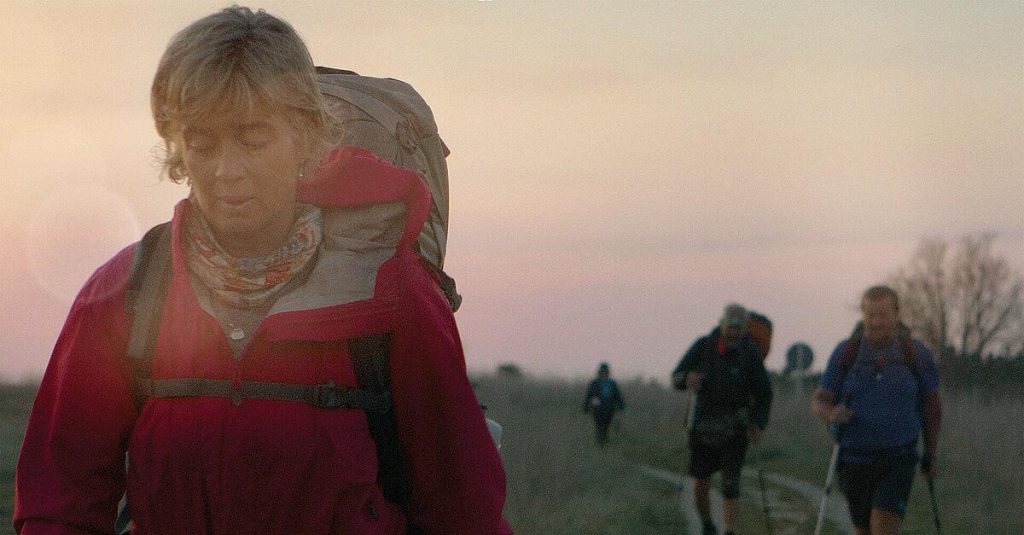
The spiritual power of the Camino de Santiago is documented

The Camino de Santiago has been revived since the 1980s, as visits by Pope John Paul II in 1982 and 1989 and the proclamation of the Pilgrims’ Routes in Europe as the first “European Cultural Route” by the Council of Europe in 1987 made significant contributions. There are currently about 30 St. James tracks in Germany. Hape Kerkeling “Ich bin mal weg” (2006), which has sold more than seven million copies, and the 2015 adaptation of the Camino de Santiago made the Camino de Santiago even more popular in Germany. In the French feature film “St. Jacques. Pilgrimage in French” (DT of 8.9.2007) a heterogeneous group of people walk the St. James Road who are not categorically portrayed religiously. Emilio Estevez’s feature film “Der Weg” (DT from June 21, 2012) and Juan Manuel Cotillo’s documentary “Footprints – The Path of Your Life” (DT from April 19, 2018) both emphasize the spiritually changing power of the Camino de Santiago.
New Zealand-Australian documentary “Paradise on the Camino – Camino de Santiago is life!” Directed by Fergus Grady and Noel Smit, now showing in cinemas, on the physical, mental and emotional experience of six people accompanying the directors on the Camino de Santiago. The four women and two men, also all from Australia and New Zealand, headed to Santiago for various reasons. Even if the film’s beautiful landscape shots are woven over and over again, Grady and Smit focus on the personal fates of their six protagonists. The directors did not reveal the motives of the six hikers from the start.
“When a person walks, he opens up
completely different from his interlocutor,
As if standing or sitting
The rather dramatic concept is that they seek a conversation with their heroes on the way. They say: “When a person walks, they open up to their interlocutor in a very different way than when they stand or sit and look directly into their face. Perhaps it is precisely the lack of eye contact that brings incredibly personal stories and intimate details to the surface that are unimaginable In traditional conversation. It turns out that this approach is the way to go, because the strongest emotional moments in the film all came about by chance.”
The “incredibly personal” stories of four women and two men are mostly stories about the loss of loved ones which really affects the viewer. Perhaps the oldest, Sue, – the viewer learns this through flashbacks – the third attempt to cover 800 kilometers from the French Pyrenees to Santiago de Compostela. Her efforts had previously been slowed twice due to health problems. The fact that the movie starts with Sue having a breakdown and being rebuilt by others is good for the movie, because it really shows the difficulty of such a height. Little by little, the prehistory of the six pilgrims on the Way of St. James was revealed. It explains why Jolie, for example, describes the Camino de Santiago as an “emotional catharsis.”
800 km accompanied by cameras for Hajj
Most of the filming was done with a portable camera – by only three people: in addition to Noel Smith and Fergus Grady, there was also production coordinator Phoebe Curran. They have always been close to the heroes: “That’s why we followed them every step of the way, for the whole 800 km. Night after night we decided with whom to leave the next morning.”
However, this procedure also shows that some images are blurred and the camera work is not always strict. However, the images capture three aspects that the film team wanted to capture: “the physical effort, the beauty of the surroundings and the sheer scale of this journey.” That’s why the filmmakers chose “the active mode of the handheld camera to depict the physical struggle of our pilgrims. To capture the landscape and details of the beauty, we chose a camera fixed on a tripod. In addition, there were drone recordings that not only convey distances but allow the audience to take a breather after watching Pictures from a handheld camera.
Technical deficiencies are compensated by the health of the six heroes. It is the openness with which they speak of the blows of fate that makes the film worth watching, which once again translates the spiritual and spiritual power of the Camino de Santiago into visuals.
The print edition of the Daily Mail complements the latest news on die-tagespost.de with background and analysis.
Get it here for free!

“Coffee trailblazer. Social media ninja. Unapologetic web guru. Friendly music fan. Alcohol fanatic.”
